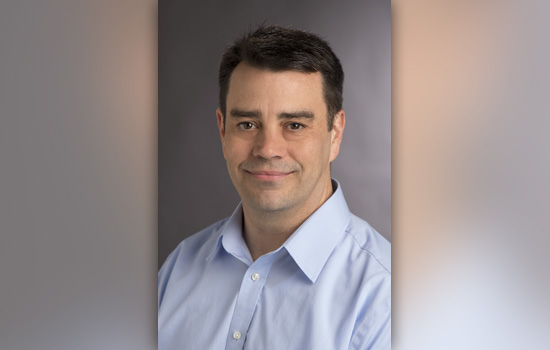RIT acquires equipment for 3D printing integration
Engineering college partners with Hardinge, Hybrid Manufacturing Technologies and IPG Photonics for development of additive/subtractive hybrid manufacturing technology
Photo provided
Ronald Aman
Rochester Institute of Technology recently received a Bridgeport GX-250 5-axis vertical machining center from Hardinge Inc., an equipment manufacturing company based in Elmira, N.Y. The two organizations will collaborate with partners on research being conducted to extend the capabilities of machining centers such as the GX 250 when integrated with additive manufacturing functions. Partners on the project are Hybrid Manufacturing Technologies, based in Dallas, Texas, and IPG Photonics, of Oxford, Mass.
“We have four main priorities—improving process planning and tool path generation, developing new materials, overall process development and new application development,” said Ronald Aman, project lead and assistant professor of Industrial and Systems Engineering in RIT’s Kate Gleason College of Engineering. “Today there is no commercial software that can reliably generate the tool paths that are necessary to control both additive and subtractive processes in five-axis equipment—a real challenge for mainstream adoption. We’ll be working on those items as well as fundamental research aimed at radically changing the way we think of materials in a part.”
The GX 250 is a multi-axis machining center that produces precision parts through traditional manufacturing processes—mechanically cutting away material from a block using rotating tools. RIT researchers will incorporate additive manufacturing—also referred to as 3D printing—capabilities to the original machine to take advantage of the geometric freedom afforded by additive manufacturing while meeting aerospace tolerance requirements, Aman explained.
Integration of multiple processes, such a laser additive manufacturing and milling or turning, into a single platform is a new and rapidly growing field referred to as hybrid manufacturing. The hybrid manufacturing process has many advantages such as lower costs and improved accuracy but also has unique capabilities such as dynamically changing a part’s material composition as it is being built.
As part of the integration process, the researchers will be incorporating multiple powder feeders to blow metal or ceramic powder into the melt-pool, a type of 3D-printing function known as directed energy deposition. Multiple powder feeders will allow the use of more than one material for a product, for example a combination of metals and ceramics or two or more metals.
“So you can imagine smoothly transitioning materials, for example, from copper to tool steel, or in the future, even ceramics. This eliminates the abrupt material composition change that is nearly always the failure point for materials with vastly different mechanical or thermal characteristic. It is going to be very unique, something that is not possible today. There are not, to my knowledge, any other processes that have the capabilities that this system has,” said Aman, who has a background in the development of direct-metal additive manufacturing processes, as well as researching and developing the hybrid additive and subtractive metal manufacturing processes of single and multi-materials systems.
Hardinge Inc.’s role in the project will be to provide field service, design and applications engineering. Laser metal deposition will be enabled by tool-changeable AMBIT heads from Hybrid Manufacturing Technologies, and a state-of-the-art laser from IPG Photonics.
“We are excited to be partnering with RIT in the development of additive plus subtractive hybrid manufacturing,” said Jim Langa, Hardinge’s senior vice president of Metal-cutting Machine Solutions and president of the company’s Turning and Milling Group. “Manufacturers are constantly in search of new processes that are flexible, improve part quality and reduce overall cost. We feel that the combination of additive and subtractive technology coupled with precise five-axis machine tool capability is exciting and has strong potential for real-world applications. Adopting, adapting and advancing cutting edge technologies for the benefit of our customers is part of our overall business strategy.”
Working on 3D printing metals has been underway for more than 10 years, and manufacturers can still only reliably build with one material at a time. But, that may change soon, said Aman.
“The partnership between RIT and Hardinge is a critical step to advance the hybrid ideas out of the laboratory and make it possible for companies to make money on this new technology.”
The equipment was installed in the Brinkman Machine Tools and Manufacturing Lab located in RIT’s Kate Gleason College of Engineering and will be part of the lab’s extensive series of high-precision machining tools and equipment. It will also be used to support research in the recently-designated New York State AMPrint Center for Advanced Technology, a new university-corporate partnership focusing on expanding additive manufacturing and multi-functional printing capabilities, considered key economic drivers in New York State.














